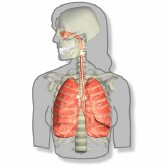Among adults with GLI-defined normal spirometry
WEDNESDAY, Oct. 7, 2015 (HealthDay News) — The Global Lung Initiative (GLI)-defined normal spirometry includes adjusted mean values in the normal range for multiple phenotypes, even when classified as respiratory impairment by Global Initiative for Chronic Obstructive Lung Disease (GOLD), according to a study published in the Oct. 1 issue of the American Journal of Respiratory and Critical Care Medicine.
Carlos A. Vaz Fragoso, M.D., from the Veterans Affairs Clinical Epidemiology Research Center in West Haven, Conn., and colleagues examined the phenotype of normal spirometry as defined by the new approach from the GLI overall and across GOLD spirometric categories. Spirometry and multiple phenotypes were assessed using data from 10,131 patients from the Genetic Epidemiology of COPD study.
The researchers found that GOLD identified respiratory impairment in 22.5 percent of the 5,100 participants with GLI-defined normal spirometry. This included a restrictive pattern in 9.1 percent, mild chronic obstructive pulmonary disease (COPD) in 7.5 percent, and moderate COPD in 5.9 percent; severe COPD was not seen in any participants. The phenotype for GLI-defined normal spirometry included normal adjusted mean values for dyspnea grade, St. George’s Respiratory Questionnaire, six-minute walk distance, bronchodilator reversibility, percent emphysema and gas trapping, and small airway dimensions. Across GOLD spirometric categories, these phenotypes remained normal for GLI-defined normal spirometry.
“These results suggest that among adults with GLI-defined normal spirometry, GOLD may misclassify normal phenotypes as having respiratory impairment,” the authors write.
Full Text (subscription or payment may be required)
Copyright © 2015 HealthDay. All rights reserved.








